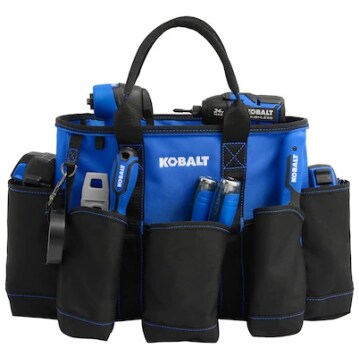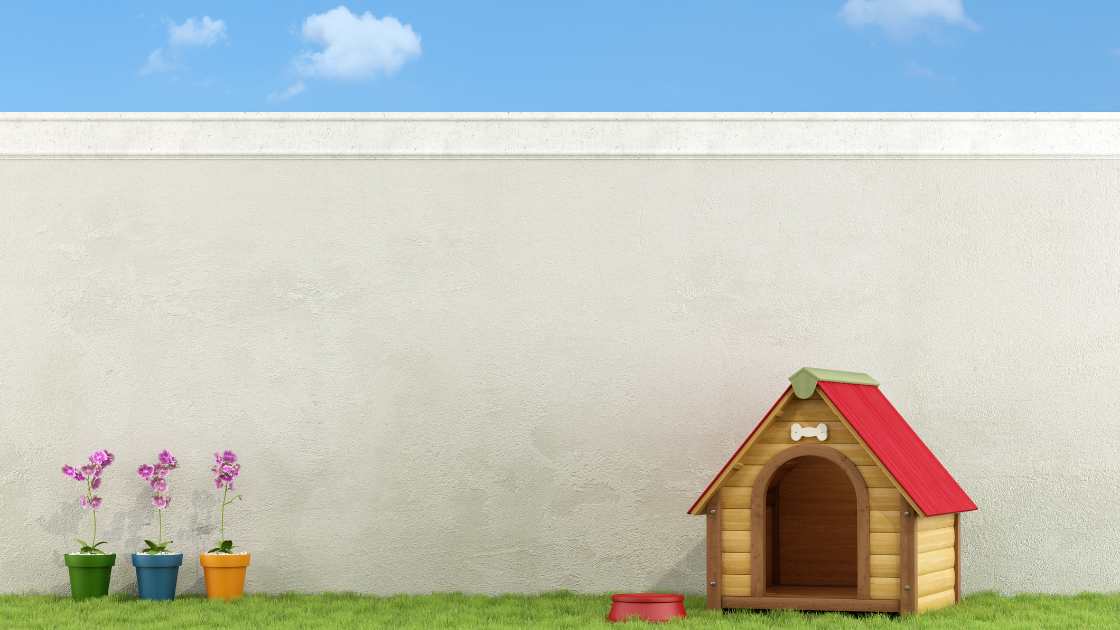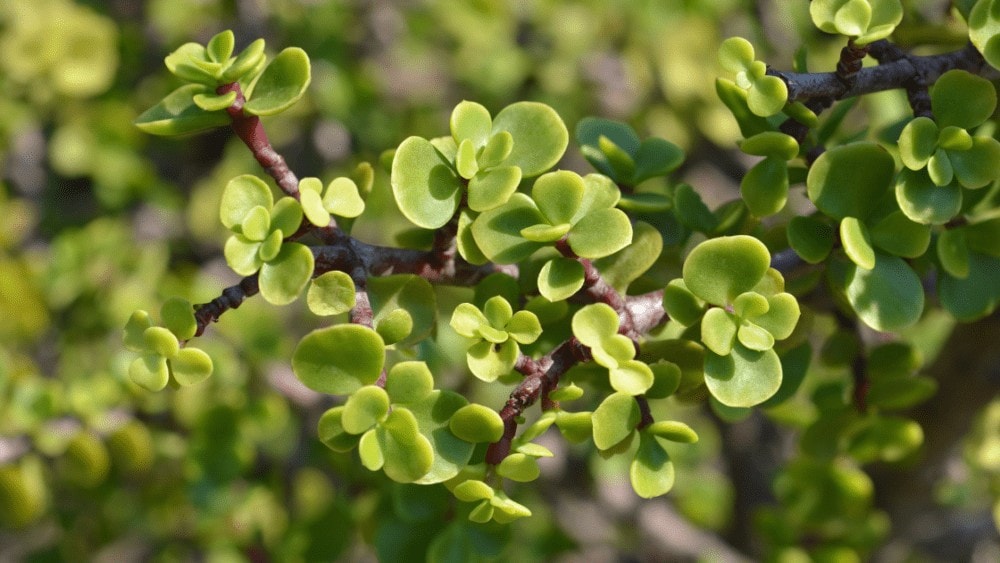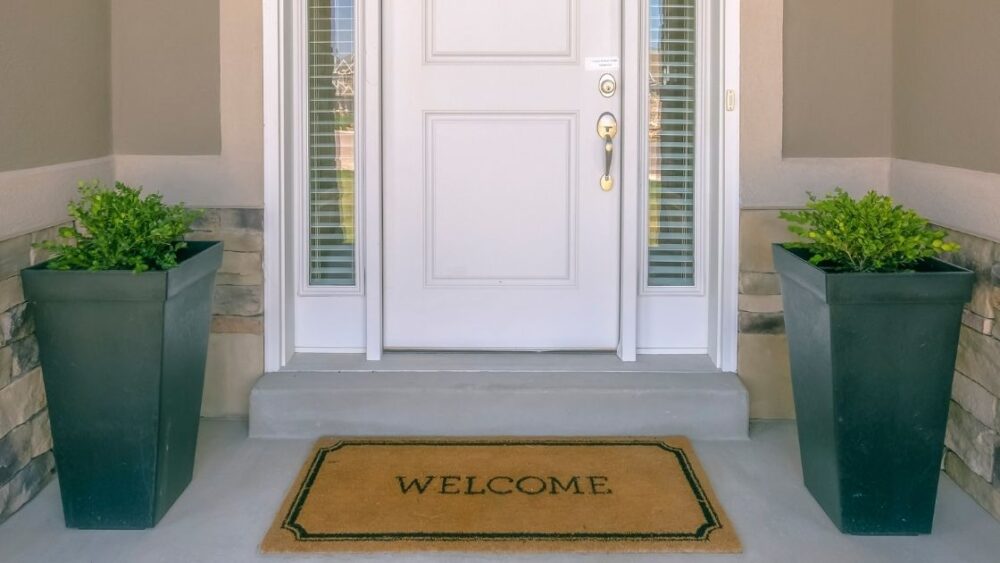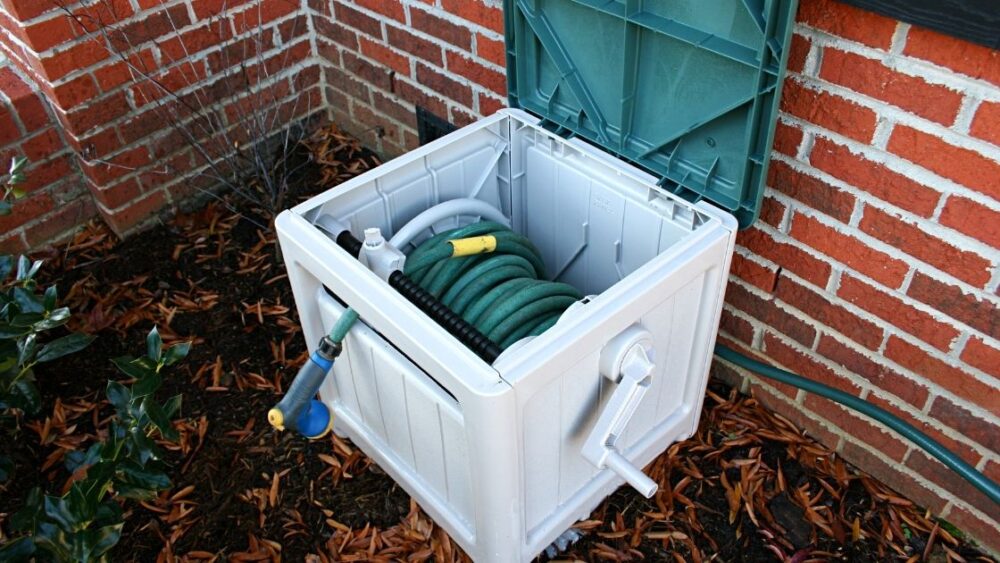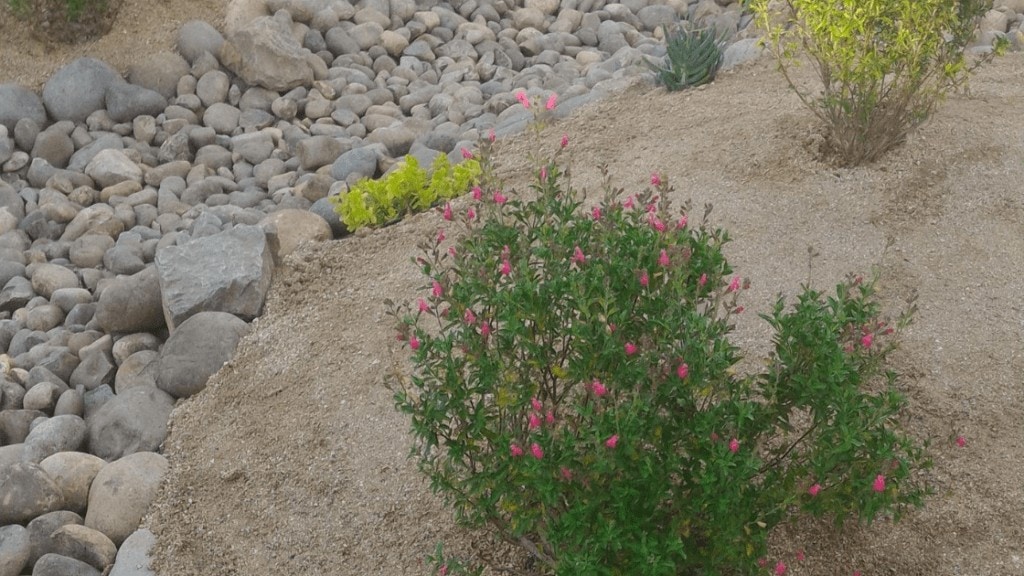
Are you thinking of the least costly way of resurfacing your walkway, driveway, or patio? But are you unable to find the right material to do so? If so, decomposed granite may be an option for you. In this article, we will discuss ways in giving your outdoor space a more natural and rustic look. If this interest you, read on.
Decomposed granite is one of the most widely used materials homeowners, as well as, companies us to fill landscapes and walkways. It also gives a natural, and rustic look while being available in many colors like hues of grey, brown, and tan.
You must be wondering what is decomposed granite? Do not wonder as we will explain it further.
Browse our Affiliate Products
What is Decomposed Granite?
Basically, decomposed granite or DG is made of small aggregates of granite. It is as fine as sand and even looks the same as sand. It is a rock of granitic origin that weathered to a point where it turned into the smaller pieces of delicate rocks.
Furthermore, those small and delicate pieces of rocks turn and crumble into gravel, sand, and silt-sized particles along with clay because of further weathering. Gradually and eventually, the gravel and sand crumble down into a fine mixture of clay, silica sand, and other silt particles. Simply, decomposed granite is the fine piece of granite that came into existence because of the process of weathering.
There are various types of granite and they weather at different rates and as a result, they produce different varieties of decomposed granite. Moreover, the root material of granite is a kind of igneous rock that is granular. The grains of that granite is sufficient enough to be visibly seen.
The transformation of feldspar which is one of the main constituents of granite into clay kaolin is one of the significant processes of weathering. The rocks crumble easily into smaller particles because of the presence of clay in it. The smaller particles that we get after this process are the granules of silica which is made from granite. So, they don’t crumble and break further. As a result, we get these granules of granite also known as decomposed granite.
When you think of granite counter-tops, it is used with the same material, but is used with a resin finish. That is why it is so durable.
What is the difference between Topsoil and Decomposed Granite?
To give your garden or landscape a beautiful look, you need to add layers of topsoil, decomposed granite, and compost. They all are different in their texture. The Topsoil is layered at first, then the compost, and after that comes the turn of mulch. But what’s the difference between these two?
Basically, the topsoil is the decomposed organic matter which is also called humus. It is the uppermost and main layer of soil on which plants grow. In addition to this, topsoil is used to fill up the holes and low spots of your garden or your lawn. Also, the topsoil helps the plants to grow better, healthier, and faster. Most importantly, the topsoil is smooth and soft, unlike decomposed granite.
Unlike topsoil, decomposed granite is granular in texture. It is made with the process of weathering. The parents’ rocks fell down and crumbled again and again, as a result of which sand-like granules are formed. After applying the layer of topsoil, the layer of decomposed granite is applied.
The lawn or your garden is layered with a decomposed granite which are small and fine pieces of sand and silica. Moreover, the purpose of layering or landscaping the lawn with decomposed granite is to make the place look more attractive and aesthetic. Most importantly, because decomposed granite helps and resists the unnecessary plants to grow.
Simply, decomposed granite is granular in texture whereas topsoil is clayey and smooth in texture. For further reading on soils in this site, The best Soils for all types of Gardens.
Is Decomposed Granite stable?
Decomposed granite is nothing but fine granules of granite. They are fine and stable. However, they are not as stable as you need them to be to maintain the aesthetics of your lawn or garden. Heavy rainfall and strong winds eventually disturb those fine sand particles. That is why you need to use some stabilizers and natural binders to stabilize the decomposed granite.
Organic lock and stabilizer solutions are some of the stabilizers that help to stabilize the DG. They assist in creating a long-lasting surface that doesn’t get disturbed because of any strong natural forces. Most importantly, these stabilizers help to maintain your aesthetic setup as well.
Where Can I Find DG?
Decomposed granite is manufactured by almost 100 quarries all around the regions of the United States. Most specifically, it can be found in different regions of The United States and Canada. Moreover, decomposed granite differs in its composition at different places like the United States and Canada. That is why the different quarries produce different colored DG.
In most regions, tan or grey colored decomposed granite is produced whereas in some other regions such as The United States, vibrant red, golden and brown colored decomposed granite is produced.
What Colors Does DG Come In?
The color of the DG differs from place to place. Some places give different colors of DG whereas some places provide the other colors. Most importantly, decomposed granite comes in many color choices making it easy to choose what you like to increase your aesthetics.
Generally, it comes in gold, grey, tan, brown, green, black, blue, red, pink, white and so many other colors. These different colors help in getting more creative and colorful. Moreover, using these colors one can easily decorate your lawn, landscape, or garden.
Is DG Typically Used For Dryscape Or Can I Use It Anywhere?
Decomposed granite is generally used for hardscape and landscaping but its usage is not only limited to that. DG is also used for layering pathways, garden trails, driveways, lawns, gardens, and other places. It is also used to make beautiful and creative low maintenance designs. Usually DG is used to divided walkways and planters, essentially acting as a divider. For more information about border edges in this site, How To Choose the Right Garden Border.
Moreover, it is also used to make visual transitions between the wilderness and the gardens. Also, one of the advantages or usefulness of the decomposed granite is that it can be used to make any minute and delicate design. For more information about Dryscapes in this site, Xeriscape vs. Dryscape: What’s the difference and How to Choose.
Can I make A Walkway With DG?

Absolutely, you can make walkways with the help of decomposed granite. It is one of the most effective ways to improve and better the look of your yard, garden, and walkway.
When installing, it is recommended that you compact DG as it will bind with the coarse grains and silt with the use of a tamper or compacter, after which, it will feel like rock. This gives the appearance of hard and stable look while dividing your garden areas. Also, the material required to make a walkway is not expensive and the labor work is also quick and simple.
So, making walkways using decomposed granite is always a good and affordable option. This is why many people and companies use this material as it is readily available and sometimes free.
For further reading on decomposed granite design, check out these reading material below.
Does DG Work With Pavers?
Definitely, it works well with garden beds and garden pavers. Generally, loose decomposed granite is a good option for making garden pavers or beds as it is rich in various organic materials and minerals. The other reason why you can use it for pavers is that it is environmentally as well as organically safe. Also, it comes in various colors such as golden, grey, vibrant reds, and many more, thereby making it look more brilliant and colorful.
Does DG Drain Well?
If you’re worried about the drainage of the decomposed granite, you really shouldn’t as it provides really good drainage. A big yes, decomposed granite drains very well as it has fine particles of sand if compacted properly. That’s the beauty of granite, it drains well and most importantly it doesn’t absorb heat.
Does DG Suppress Weeds?
It really depends on how deep is the layer of decomposed granite. If the DG is about an inch or two-inch-thick then the weeds will root in the soil and will show up above the DG. If the granite is 5 to 6 inches thick then they are rooting in the topsoil and dust which is minimal.
In any case, grading (leveling) your DG would be an option as it will disrupt the rooting of the weeds. Other than this, if the problem still arises then you can make use of certain herbicides and fertilizers. Regular spraying of the herbicides will kill the weeds.
For areas that are landscape with DG, it’s would be good to use raised garden beds, or directly plant low drought resistant plants such as succulents and cactus.
Does DG get muddy?
Decomposed granite is generally made of fine and smaller particles of granite, silt and clay. When you combined with enough rainfall or saturation from sprinkler will tend to become muddy. If this is the case, it is recommended that you grade your DG so water can flow off of the surface area to dry at a later time.
Although, regular watering is not a problem, heavy rain or standing water for a long period of time can get mushy and muddy. As with any soil, proper drainage is key.
Is There Any Maintenance In Having DG?
It really depends on what you use it for, and how much traffic it’s getting. Decomposed granite is not necessarily maintenance-free sometimes requiring raking to remove weeds, redressing, refilling, and at time recompacting. As such, , like all aspects in life and gardening you have to work for want you really want. Since using decomposed granite is a low fire exposure, many people choose to install firepits. Check out this article here. Are Fire Pits a Good Idea For Your Outdoor Space?
Does DG Do Well With Plants And Around Trees?
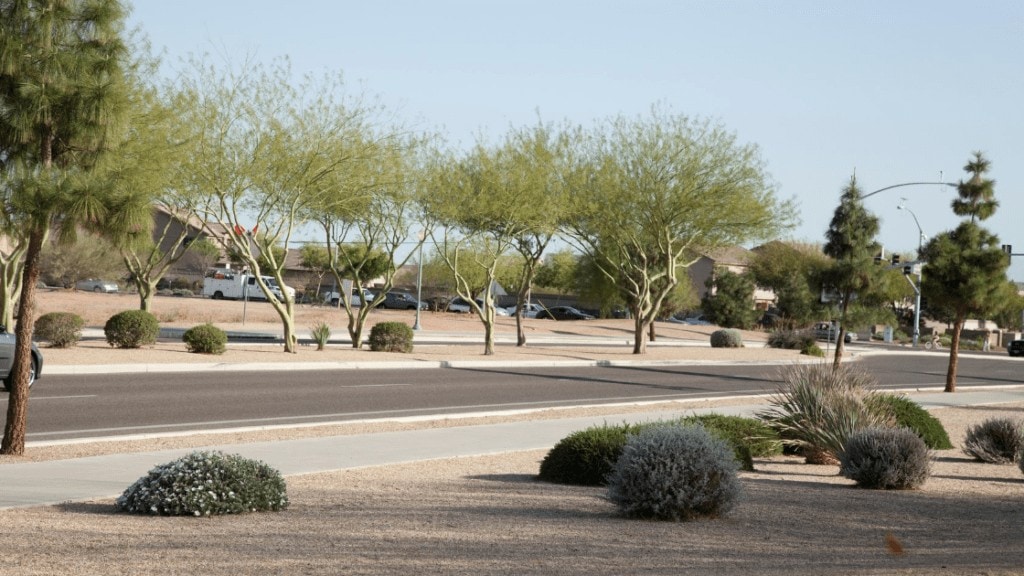
Yes, natural decomposed granite works as a decent mulch around plants and trees. It works in a similar fashion as wood mulch. It generally continues to weather once put around the plants and supplies essential nutrients to the soil and surrounding plants.
The best part is, it lasts much longer than the other kind of mulch materials and it doesn’t attract pests as well, which is another plus. Moreover, you can also use it under large trees where you don’t want to grow any grass. This is why many cities and municipalities choose this type of material.
Can You Use DG On Slopes?
Natural DG is not a good idea to use on slopes because it is unstable and loose. However, when used with binders or stabilizers, it can be used for sloppy pathways. It can be added on top of a base layer made of either gravel or something else. It can also be used with resin to give a more natural look and provide more stabilization. Also proper compaction plays a big role.
Is DG expensive?
Generally, the cost of DG starts from $40 to $50 per cubic yard. You can easily get it from your local Home Depot. Adding to it, there will also be an installation fee ranging between $4 to $6 (depending upon the type of work and other conditions) which you have to pay the contractor.
If you want to save added cost then you can save the extra expenses by installing the DG yourself. By learning simple techniques such as grading and compacting, in which, all can be done by hand with a little patience and elbow grease.
However, for an advanced installation like a resin-coated driveway or stabilized DG, it is a good idea to take help from an experienced professional.
Are There Any Disadvantages When Using DG?
Just like any other landscaping material, DG also has some negatives. But the good thing is, you can always work around these downsides by using some preventive measures. Below are the main drawbacks of using decomposed granite:
DG Does Get Muddy. The main problem with DG is it does get muddy after rainfall, or a heavy snow session. Since DG is exposed at the surface, silt and clay generally don’t do well with water resulting in mud. When it comes in contact with water, the silt loses its texture and gets muddy. BUT, you can overcome this by using staggered pavers to be used as stepping stones if used for walkways. Let’s face it, DG sticks to shoes because of its loose texture. These debris can scratch your flooring and does collect a lot of dust as well.
DG is not recommended for the areas that experience frequent rainfall as it can’t stand water and moisture for an extended period of time, but the good news is, it dries fairly quickly. Although it does drain, heavy rainfall can become an issue.
DG with resin is quite expensive, but will last longer than raw material while repelling water. Basically, you save in the long run.
Although these are a few disadvantages of using decomposed granite, there is always a way to work around it. Usually for small areas this is not a huge problem, but if your using this material for sloped driveways and walkways, you may want to use the advice of a professional or use stabilizers to support your new surfaces.
Conclusion
As with any upgrading there is always a learning curve, but if you’re in the market to reduce turf areas or make your garden more appealing, Decomposed Granite might be an option. Sure it may need maintenance, but what doesn’t for something that you can say you created. After all, that is the whole point. Happy gardening.


